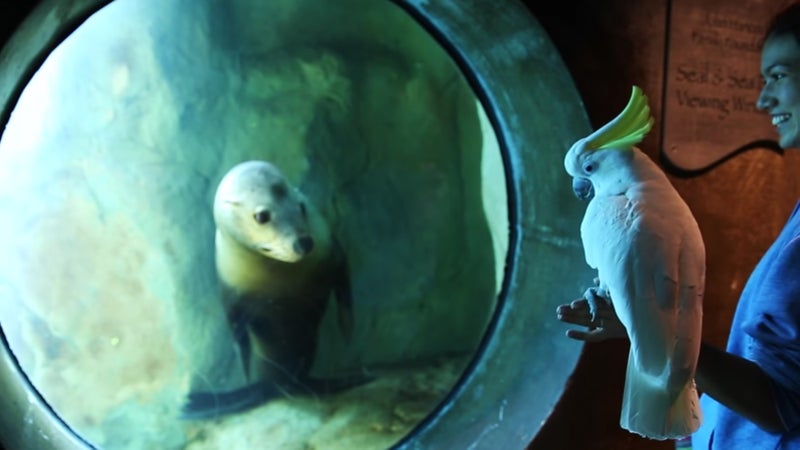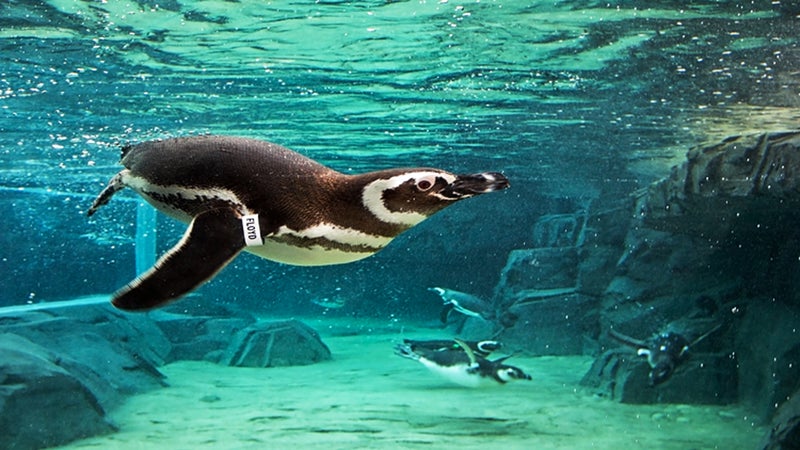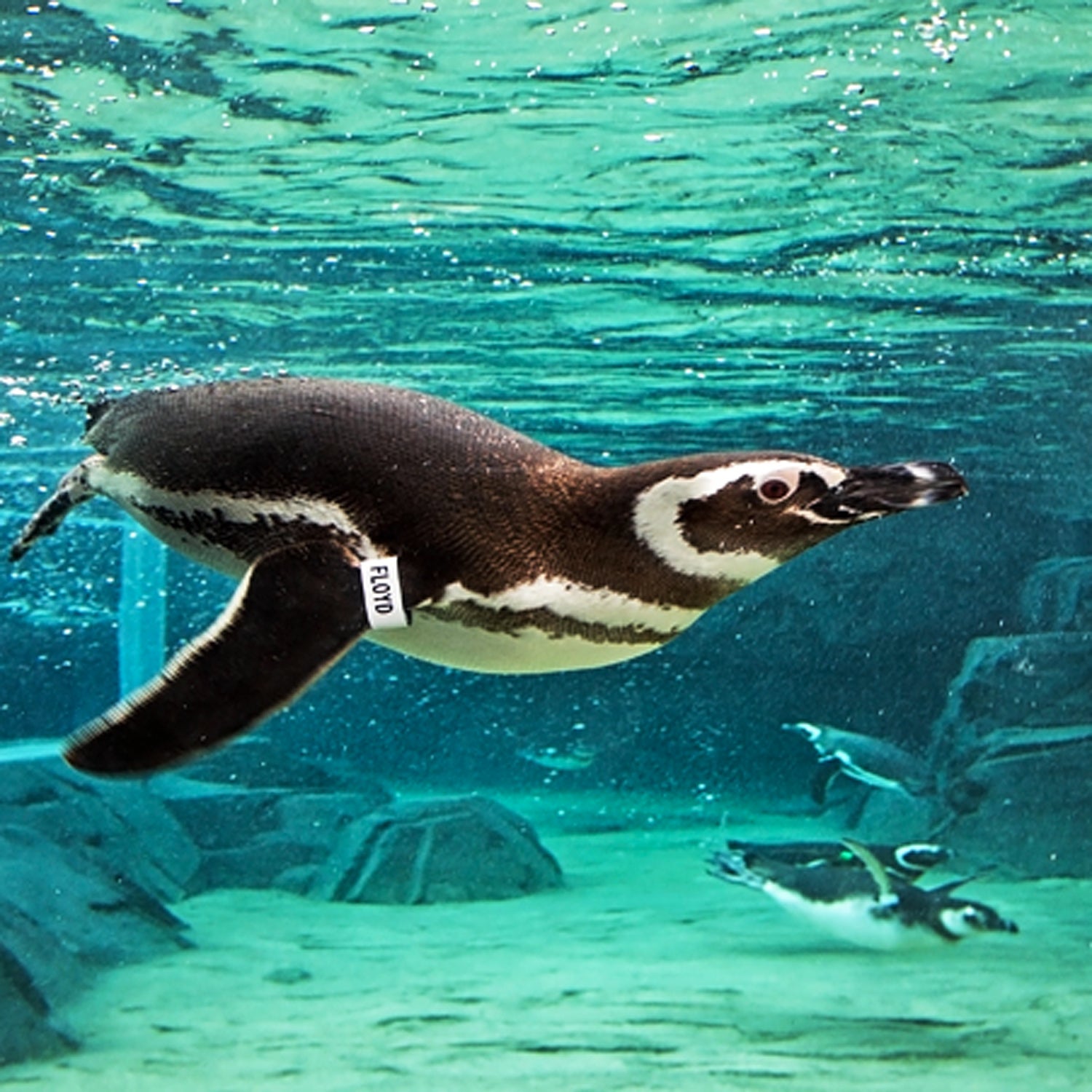Two years ago, Jerry Schubel, president and CEO of the╠ř╠řin Long Beach, California, told me, ÔÇťIf you want your kids to care about the ocean, get them to care about the things that live in the ocean.ÔÇŁ╠řHe invited my four children╠ř(ages twelve, nine, four, and one at the time) to the aquarium for a day of petting sharks, feeding sea otters and manta rays, enjoying the company of╠řa precocious two-year-old Magellanic penguin, and shadowing╠řstaff as they identified and logged╠řaquatic life sightings aboard╠ř.╠ř
On that cruise, we fell in love with a family of five fin whales swimming in the ocean. We could hear each whale breathe, and some of us got sprayed in the face by water from╠řtheir blowholes. Today╠řwe still think about their well-being╠řand what we can do to prevent threats to╠řthe second-largest species of whales.╠ř
Now, with shelter-in-place orders in effect, I wondered how aquariums and ocean-conservation programs would╠řcontinue sharing these kinds of experiences remotely. Fortunately, the Aquarium of the Pacific and a number of other organizations throughout the country are offering families a variety of engaging activities online.╠ř
Aquariums
The Aquarium of the PacificÔÇÖs╠ř includes╠řprograms with its╠ředucators, live╠ř,╠ř videos, a , and a╠ř. ÔÇťThe interaction between us and the audience is key,ÔÇŁ says╠řDavid Bader, its director of education. ÔÇťWe are trying to use face-to-face teaching theories in a distance-learning platform. We are building connections and community among our viewers. We want people of all ages who are at home to engage with our exhibits and animals and learn about the ocean.ÔÇŁ
The aquariumÔÇÖs free╠ř app challenges both adults and kids to sustainably consume food, water, and energy. around the aquarium is an especially popular post.

is the public-outreach center for the Scripps Institution of Oceanography at the University of California at San Diego, one of the largest research programs for ocean and earth science. Tune in to its╠ř events and watch behind-the-scenes videos of things like╠řhatching╠ř╠řor a╠ř tank that is pumped with sea water,╠řwhich facilitates the growth of╠řalgae.╠ř
Each week╠řthe╠ř premieres a new video in its╠ř YouTube series. Check out its╠řnew╠ř, which offers╠řfield guides and lesson plans for kindergarten╠řthrough 12th grade. Its╠řmost popular posts feature puppies from the Atlanta Humane Society while itÔÇÖs closed to the public.
In Hawaii,╠ř╠řhas set up╠řnew╠ř, like how to draw marine animals with Hawaiian nature artist Patrick Ching and webcams of the Hawaiian monk seal named Hoailona, the south shore of Waikiki, and the aquariumÔÇÖs╠řgalleries.
ÔÇťEngaging and inspiring the public about the wonders of our blue planet is central to our mission,ÔÇŁ says╠řVikki N. Spruill, president and╠řCEO of the . To continue those efforts during the pandemic, her aquarium╠řis hosting╠řa╠řnew series of╠ř, daily live educational presentations╠řon╠ř at 11 A.M. EST, interviews with aquarists, and at-home projects. The╠řmost popular video since its closure has been╠řthe╠ř.
Some unique opportunities have been made possible because aquariums are closed. From March 26 to April 14, the U.S. Fish and╠řWildlife Service granted╠ř╠řin California a special exception to livestream what guests would normally not be allowed to see: resident╠ř. Visit its╠ř page to find free self-paced online courses, such as╠ř for pre-K╠řto second grade╠řand╠ř for grades three through six. ÔÇťOur education team helps students to think like a scientist while they learn about ocean animals and habitats╠řand what they can contribute to conservation,ÔÇŁ says╠řRita Bell, its vice president of education.╠ř

Nonprofits and Government Agencies
The╠ř, located╠řin Laguna Beach, California,╠řoffers long-distance╠ř╠řthat are╠řnormally only available to╠řschools but are╠řnow open to everyone. Using the╠ř, participants can╠řtake photos╠řof tagged seals╠řor sea lions in the wild╠řso the center can see where the animals they once took care of are and how theyÔÇÖre faring.╠ř
manages 14 national marine sanctuaries as well as╠řthe╠řPapahanaumokuakea and Rose Atoll Marine National Monuments, located in the North and South Pacific Oceans, respectively. Start with╠ř for╠řaccess to its╠řinteractive live╠ř series, which includes videos like ÔÇť,ÔÇŁ early releases of its╠ř, games, a curriculum, and expeditions.
The╠ř, originally scheduled to run in March in San Francisco, has released its╠řfilms for free online. Movies╠řlike ,╠řabout a 16-year-old learning to scuba-dive,╠řwere added for╠řmiddle school and high school students who were set╠řto attend the festival. ÔÇťSome of these kids have never been to the ocean. Our goal is to bring the ocean to our audiences, since they canÔÇÖt come to us,ÔÇŁ says╠řexecutive director Ann Blanco. ÔÇťOur desire is to keep the conversation going, so we can learn about the beauty of our ocean, the amazing animals that live in the ocean, and how we recreate with the ocean for our pleasure. The ocean brings us calm and reduces our stress, so weÔÇÖre trying to help during this critical time with the power of film.ÔÇŁ
Although virtual experiences provide similar benefits to reality, we had such a fantastic once-in-a-lifetime experience with the whales that I wasnÔÇÖt sure how╠řvirtual programs could compare. But╠řafter a week of introducing these resources to my family, I noticed that my older kids would sometimes skip Fortnite meetups just to attend underwater livestreams. After working my way through the Aquarium of the PacificÔÇÖs lecture series╠ř, I now serve my family only seafood from sustainable and responsible wild and farmed sources, and I╠řmake smoothies with seaweed. And while watching the Monterey Bay AquariumÔÇÖs ╠řand listening to its social-media team answer╠řquestions about stranded pups one day, my six-year-old giggled╠řat the sight of╠řIvy, a╠řresident sea otter,╠řpouncing on the back of a pup, wrapping╠řher arms around the pupÔÇÖs waist, and wrangling╠řher down to a sleeping position.╠řÔÇťMom, thatÔÇÖs what you do with us,ÔÇŁ my daughter╠řsaid.╠řMy three-year-old asked╠řme to scratch her belly the way Ivy was╠řcalming down her pup. Then she pointed╠řat the pup and said, ÔÇťShe looks just like me.ÔÇŁ╠ř


